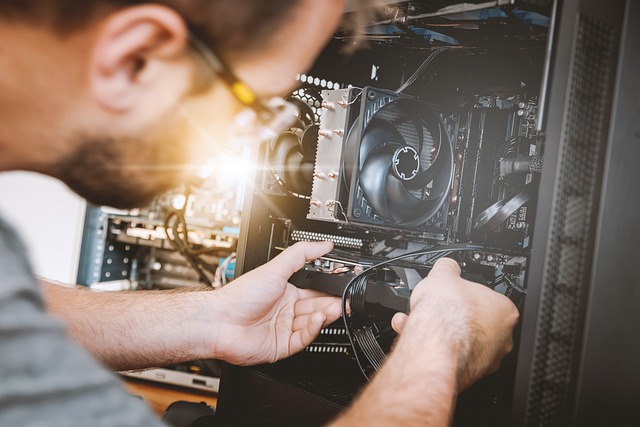Do you want to know how amplifiers work in audio systems? Do you want to improve the quality of your sound and optimize your setup? If that’s the case, you’ve come to the right place. This blog will explain what amplifiers are, how they work, and what role they play in delivering great sound. We’ll also go over various amplifier types, common features, and practical tips for using them effectively. Let’s get this party started.
What exactly are amplifiers?
Amplifiers are electronic devices that increase the amplitude, or strength, of an electrical signal while keeping its frequency and waveform unchanged. Amplifiers are used in audio systems to boost the power of a weak audio signal from a source, such as a microphone, a CD player, or a streaming device, and drive a speaker or a headphone to produce a louder and clearer sound. Depending on their design and settings, amplifiers can also provide some control over the tonal balance, dynamic range, and distortion of the audio signal.
What is the operation of an amplifier?
To amplify an electrical signal, amplifiers employ transistors, vacuum tubes, or integrated circuits (ICs). An analog-to-digital converter (ADC) converts the input signal from analog to digital before feeding it to an amplifier circuit that adds gain to the signal. A digital-to-analogue converter (DAC) converts the amplified signal back to digital form before being sent to a speaker or headphone to produce sound waves. The sound quality is determined by the components’ quality, the system’s signal-to-noise ratio (SNR), and the transducer’s characteristics.
What is the Function of Amplifiers?
The primary function of amplifiers is to boost the power of an audio signal so that it can drive a speaker or a headphone and produce audible and enjoyable sound. The signal from the source would be too weak without amplifiers to drive a transducer efficiently, resulting in low volume, poor clarity, and distorted sound. Amplifiers also give users some control over the volume, tone, and dynamics of the sound, allowing them to tailor the sound to their preferences and optimize the system’s performance.

Amplifiers of Various Types
There are several types of amplifiers, each with its own set of benefits and drawbacks:
Class A
amplifiers are the most basic and linear amplifiers, but they are also the least efficient and most prone to heat dissipation. They employ a single transistor that continuously conducts regardless of the input signal, resulting in high power consumption and low power output.
Class B
Amplifiers are more efficient than class A amplifiers, but they are also more complex and have lower linearity. They use two transistors that conduct alternately based on the polarity of the input signal, resulting in higher power output and better power efficiency, but also more distortion and crossover distortion at low volumes.
Class AB
Amplifiers combine the advantages of class A and class B amplifiers by employing two transistors that conduct simultaneously for a portion of the input signal and alternately for the remainder. This results in higher power output, better power efficiency, and lower distortion than class A amplifiers.
Class D
Amplifiers are the most efficient, but they are also the most complex and prone to noise and artifacts. They employ a pulse-width modulation (PWM) technique to convert the input signal into a series of high-frequency pulses that drive a switching amplifier, yielding high power efficiency and output, but also high-frequency noise and intermodulation distortion.
Finally
Amplifiers are critical components of audio systems that play a critical role in delivering high-quality sound. Amplifiers enable us to hear and enjoy music, voice, and other sounds with clarity and impact by amplifying the electrical signal from a source and driving a speaker or a headphone. Amplifiers also give users some control over the tonal balance, dynamic range, and distortion of the sound, allowing them to customize the sound to their liking and optimize the system’s performance.
Different amplifier types have different trade-offs in terms of efficiency, linearity, distortion, and complexity, and users should select the type that best meets their needs and budget. Some amplifiers may also include built-in equalizers, tone controls, or digital processing, which can improve sound quality or simplify setup.
It is critical to follow some best practices when using amplifiers, such as matching the impedance of the amplifier and the Speakers, avoiding clipping and distortion, and minimizing noise and interference. When using amplifiers, it is also important to consider the power requirements, heat dissipation, and safety precautions.
Overall, amplifiers are fascinating and powerful devices that have transformed how we listen to music and communicate with one another. Understanding the role of amplifiers in audio systems can help you appreciate the beauty and complexity of sound and improve your listening experience, whether you are a musician, a DJ, a sound engineer, or a casual listener. We hope this blog has given you some useful amplifier insights and tips, and we encourage you to continue exploring and experimenting with different setups and configurations to find your own sonic signature. Happy listening!






















